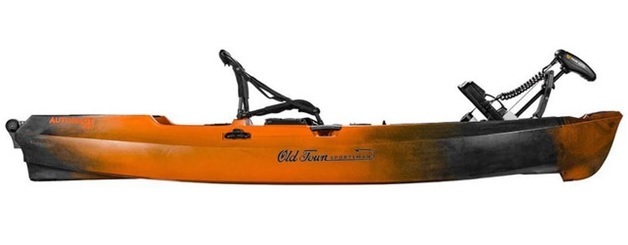Posted by Forrest on Feb 5th 2025
Nip Trolling Motor Damage in the Bud: How to Avoid Damaging Your Electric Trolling Motor
You paid good money for your power-equipped fishing kayak. Perhaps you even went all-out and got a model like an Old Town Autopilot 120.
If you did, then the trolling motor is the life of the rig. The one drawback is that these motors have greater design complexity than pedal drives and paddles, and therefore, there are more opportunities for failure.
That can leave you stranded on the water and it can also incur expensive repairs. Here are a few creative ways to safeguard your trolling motor, helping it to last longer.
Avoid Collisions
This should be obvious, but keep your head up while on the water. The human element is the first buffer to prevent trolling motor damage.
First off, don’t power forward at full steam if you’re in unfamiliar water. Reserve the breakneck pace for when you’re on water you know. Submerged obstacles and sandbars can damage your motor shaft or break your shear pin.
In the latter case, you’ll be dead in the water till you replace the shear pin (which is why you should always carry a spare on the water) and that’s not something you want to experience.
All in all, just be careful when you’re on the water. The best way to solve damage-related issues is to prevent them and for that a dose of caution is the best medicine.
Don’t Run Your Trolling Motor Constantly
Get where you need to go at a reasonable speed and then give your trolling motor a break. It’s alright to run the spot-lock if you have it, but otherwise, let your motor cool off. Not overloading the motor is just one more way to safeguard longevity.
Install a Circuit Breaker
Depending on your current configuration, there might already be a breaker installed on the positive lead of your motor. If not, consider splicing one in. It’s about as easy an electrical job as is out there, and doing so will help prevent your motor from running at a voltage that’s too high, which can burn it out very quickly. This is one of the most affordable and most practical upgrades you can make to your setup to protect your trolling motor.
Protecting Your Electric Circuitry
Protecting your exposed electrical infrastructure, especially if you operate in saltwater, is absolutely imperative to longevity.
The first thing you should do is use marine electrical wire, though this is probably already done for you, as the leads that came with your motor are probably already tinned.
The second thing is to protect the wire where it is exposed, such as where the leads are in contact with the terminals. Any exposed wire should be coated in marine-grade dielectric grease. Just make sure you don’t get grease in between the terminal and connections, or the circuit will short.
Protecting the Motor
Another thing you can do is make sure your motor mounts or brackets are properly installed in such a way that they minimize vibratory load inflicted on the motor. Subjection to constant vibration can damage the motor’s internals so ensuring a proper mount is critical.
Install a Weed Guard
There are weed guards you can buy that are compatible with some trolling motors, and which will help prevent the motor from sucking up weeds, muck and fishing line.
In the event you’ve never experienced this unfortunate circumstance, suffice it to say that a motor struggling against a load of weeds or line can burn out, and sometimes they do. The best thing to do is prevent it, and installing a weed guard may be able to help.
Do Not Charge the Battery with the Motor Hooked Up
Lastly, whenever you are charging the battery that powers your trolling motor, remove the motor’s leads. You can charge the battery in the yak but disconnect the leads in order to preempt any damage that might be incurred to the motor’s internals during charging.
Final Pro Tip: Get a Backup Battery
Here’s one more professional tip for you, even though it doesn’t expressly have to do with trolling motor maintenance or preventing damage.
A lot can go wrong with a battery while you’re on the water, the least of which is that the battery can die.
In that event, it’s worthwhile to have a spare battery out there with you. Keep both fully charged, and keep terminal covers on the backup to prevent accidental arcing.
That way, if you ever die on the water, you can just hook your motor up to the spare to get you back to port.

Here for a Power-Equipped Fishing Kayak Like an Old Town Autopilot 120?
Upgrading to a power-equipped fishing kayak for sale like the Old Town Autopilot 120 can boost your range and efficiency while on the water and will totally revolutionize how you think about kayak fishing.
And with these tips, your trolling motor will go farther. Investigate our collection of fishing kayaks for sale today to learn more about the models we sell, and get in touch with us if you have any questions.

